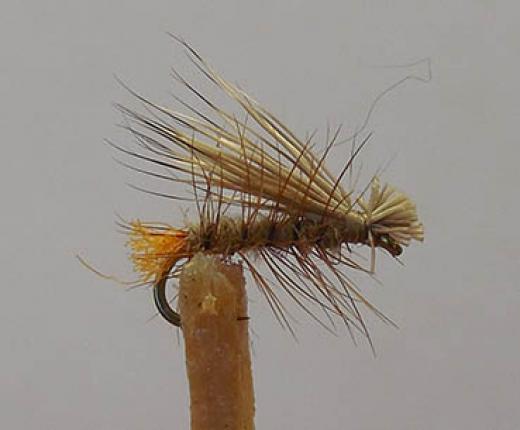The Trout Line Newsletter - July 16, 2018
THE TROUT LINE
July 16, 2018
Welcome to The Trout Line Newsletter! This is our Tualatin Valley Trout Unlimited Chapter newsletter that will be coming out twice a month on the 1st and 3rd Mondays of the month.
Fly of the Month - Elk Hair Caddis
Like many who love to fly-fish and also to tie, I have perhaps several hundred patterns stuffed in my fly boxes. Seems like every fishing magazine and every fly shop has dozens of new patterns that catch my eye. But if pressed to pick my six or so "standbys", there is no doubt that an elk hair caddis will be on my list, and it should be on yours as well. Caddis make up a huge percentage of our quarry's diet in the summer months, and the tried and true elk hair can't be beat. It also has the distinct advantage of being very easy to tie.
Thread: 8/0, color to match the body
Hook: Tiemco 100BL sizes 12-16
Egg sac: Orange or red yarn or dubbing
Body: Tan, olive, sulfer, brown or black fine dubbing
Palmering (optional): Tan or cream hackle
Wing: Fine elk hair (or despite the title, deer hair)
1. Tie in a small egg sac just at the bend of the hook, with one or two wraps of small yarn or dubbing.
2. If a palmered fly is desired (I like it as it improves floatability), tie in a small hackle by the tip at the front of the egg sac. The hackle splines should be about the length of the hook gap.
3. Dub a body starting at the egg sac with a slightly tapered shape forward to just behind the hook eye.
4. Palmer the hackle forward to the front of the body in four or five turns, tie off and clip.
5. Clip off a clump of elk or deer hair sufficient for a fairly full wing, remove the underfur by holding the hair by the tips and stroking out the fur, and stack the hair in a stacker. Elk hair generally has more floatability that deer hair due to its structure but also flares more when tied in. Deer hair also seems to be available in more colors and varieties; I usually use standard mottle-brown hair of either specie but for some caddis varieties use different colored hair.
6. After stacking, hold the hair by the tips with your fingertips and position the hair on the top of the fly so that the hair extends just beyond the body of the fly. Tie in the hair just behind the eye with three tight wraps and then to reduce the flair, wrap the hair with three looser wraps of thread just behind the tie-in point, then wind forward over the tight wraps.
7. Lift the forward portions of the hair in front of the tie-tin point and finish the head. I do that by a number of wraps to build the head and finish with three half-hitches, never being enamoured of a whip finisher. Finish the head with a drop of head cement.
8. Hold the clump of the forward portions of the hair at a 45 degree angle up from the hook shank, and clip them about equal to the front of the eye. You're done!
On my last trip, the fish were eager to take this caddis whether on top as a true dry, or submerged in the eddies and holding spots around the rocks. This must be the hamburger of trout diet. Forget the American Express card- don't leave home without this fly.
Meetings Location and Dates
Regular chapter meetings are held at the Lucky Labrador Public House 7675 SW Capitol Hwy. Portland, OR 97219 (503) 244-2537. Food and beverage available. Social get together starts at 6:30 pm and formal meeting starts at 7:00 pm unless otherwise noted in the newsletter or website.
More Information:
TVTU Website: https://tualatinvalley.tu.org/
Current Board Members and Contact:https://tualatinvalley.tu.org/tualatinvalley/about
TVTUBlog: http://tvtroutunlimited.blogspot.com/
TVTU Facebook Page: https://www.facebook.com/tualatinvalleyTU/
C4C Facebook Page: https://www.facebook.com/christmasforcoho/


